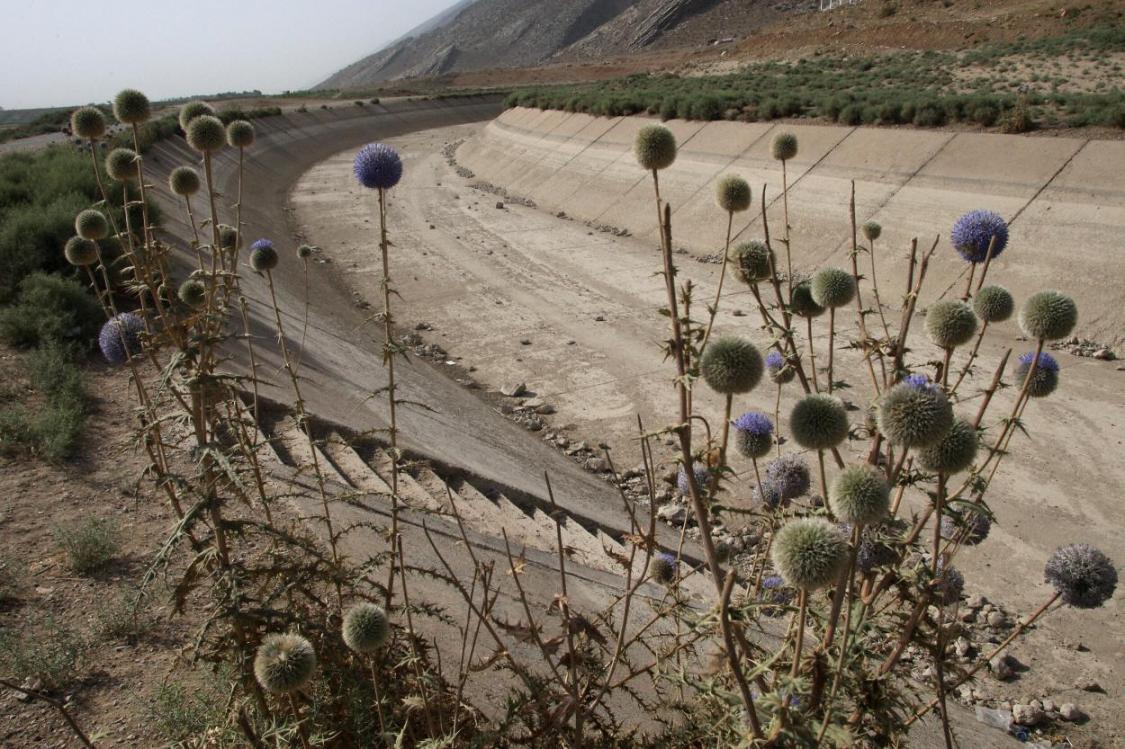Iran is prepared to adapt to a warming Earth, according to the most recent issue of the University of Notre Dame Global Adaptation Index (ND-GAIN).
Iran’s low vulnerability (0.380) and high readiness (0.448) scores mean “adaptation challenges still exist, but the country is well positioned to adapt.”
Iran is the 66th least vulnerable country and the 89th least ready country.
The ND-GAIN Index uses 46 indicators to measure climate change risks to 191 countries and how ready they are to accept investment that could help them cope with more extreme weather and rising seas.
Iran has enjoyed a steady rise in the rankings, from 90th in 1995 to 83rd in 2014. Despite Iran’s relatively decent position in the rankings, however, it would be naïve to think the country is out of the woods.
ND-GAIN measures the overall vulnerability by considering vulnerability in six life-supporting sectors – food, water, health, ecosystem service, human habitat and infrastructure.
Unsurprisingly, the index specifically points to Iran’s dwindling water resources as the most vulnerable life-supporting sector to climate change.
Iran’s water score is 0.594, with 1.000 being the worst possible score.
The water score captures a country’s vulnerability of fresh water supplies to climate change. Indicators include projected change of annual runoff, projected change of annual groundwater recharge, fresh water withdrawal rate, water dependency ratio, dam capacity, and access to reliable drinking water.
After water, ecosystems services, food, human habitat and health are most vulnerable to the negative effects of climate change, respectively.
Water Dilemma
Iranian experts predict that the country’s water scarcity will hit crisis level by 2025, when available renewable water will be less than 1,000 cubic meters per capita, down from 2,000 cubic meters in 1950.
A noxious combination of unsustainable farming, ineffective policies and mismanagement, haphazard urbanization, and population explosion has taken a toll on Iran’s fast-depleting water resources.
As high as domestic water use may be, it pales in comparison to the amount of water used in agriculture. Iran’s wasteful farming practices gobble up over 90% of the water resources, with a mere 30% return.
Furthermore, a 40% drop in groundwater discharge — the volumetric flow rate of groundwater through an aquifer — over the past 10 years has led to the deterioration of water quality, land subsidence, gardens and farms drying up, and disturbing migration patterns from rural to urban areas.
According to Isa Kalantari, advisor to First Vice President Es’haq Jahangiri on environmental affairs, prolonged drought and extreme water stress could displace 50 million Iranians unless effective action is taken to curb the impact.
Based on the norms of the Food and Agriculture Organization of the United Nations, any country with per capita water consumption of 1000-1700 cubic meters will face water tension in the long run. While the figure for the northwestern regions of Iran, central Iran and northern provinces stands at 400, 300, and 500 cubic meters respectively, western regions as well as some northern provinces use between 1500-1800 cubic meters per capita.
This means Iran has exhausted more than 75% of its water resources, well above the limit of 40%, leading to water crisis
Conflict-Driven Climate Change
Syria, Libya and Yemen are among the countries whose ability to withstand climate change shocks and stresses has deteriorated most in the past five years, suggesting wars, military conflict and extended internal strife make people more vulnerable to climate impacts.
The main contributing factors to the falling scores of the three fragile states in the Middle East and North Africa, driven by armed conflict, are increases in political instability, violence, corruption and poor rule of law, according to the index, Climate Central reported.
“Even without climate change, you’re going to see that countries that have done a poor job on their governance or economic systems are a source of refugees, (and) because of conflict, they haven’t been able to serve their people, and things are deteriorating there in all different sectors,” said Joyce Coffee, ND-GAIN’s managing director.
But adding vulnerability to climate change — which affects food and water security, and less directly health and sanitation — appears to indicate “where the real flash points are,” she told the Thomson Reuters Foundation.
10 Nations Make Progress
In the same period, 10 countries made marked progress in their ability to cope with climate change, the annual index showed.
They are Malaysia, Albania, the Solomon Islands, Guinea, Mongolia, Rwanda, Poland, Russia, the Philippines, Georgia, Laos and Ivory Coast.
The researchers attributed their success to economic gains and development improvements such as boosting access to reliable drinking water and sanitation, strengthening agriculture, and lowering slum populations and child malnutrition.
The ND-GAIN findings imply that investments in climate change adaptation could pay dividends for a country’s stability and development, and vice versa, the researchers added.
Issued ahead of the high-profile UN climate summit in Paris (November 30 – December 11) set to agree a new deal to curb climate change, the index is intended to help leaders prioritize investments to help countries adapt better, and ensure the most vulnerable are not forgotten, Coffee said.
“To save lives and improve livelihoods, we must not only prevent the avoidable, but also prepare for the unavoidable changes in climate,” she added.


